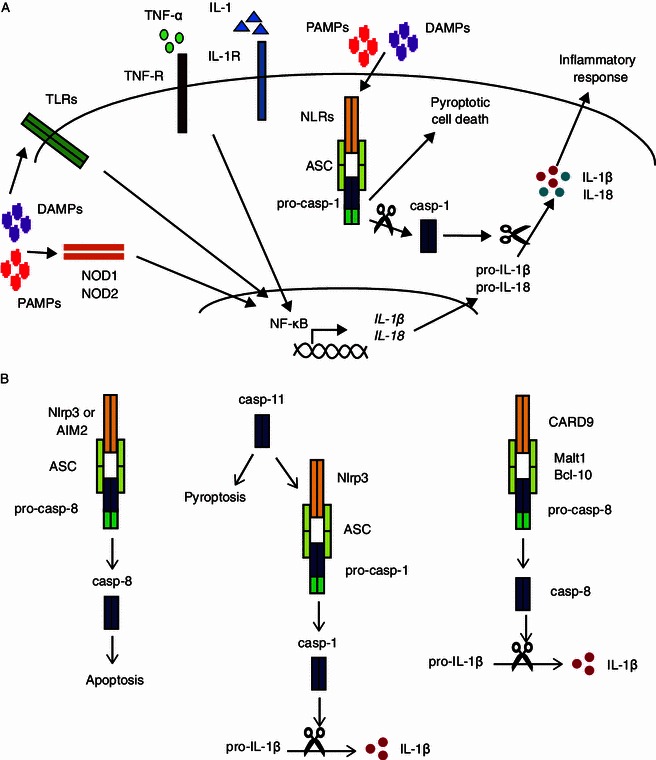Figure 1.

Inflammasome activation and signaling. (A) Inflammasomes are activated in two steps. First, priming induces the expression of pro-IL-1β and pro-IL-18 through the activation of NF-κB. NF-κB is activated by TNF-α and IL-1 or through sensing of “danger signals” (PAMPs and DAMPs) by TLRs or NOD1/2. Priming also readies the inflammasomes for activation through other unknown mechanism. The second step involves the sensing of PAMPs and DAMPs by NLRs (NLRP3, NLRC4, etc.) or AIM2 through mechanisms that are not fully understood. Some NLRs, such as NLRP3 and NLRC4, interact with pro-caspase-1 through ASC, while others, such as NLRP1 can interact directly with caspase-1. Activation of NLRs results in the activation of pro-caspase-1, which when cleaved can catalyze the proteolytic cleavage and activation of IL-1β and IL-18. Activation of caspase-1 can also induce pyroptotic cell death, though cleavage of caspase-1 is not required for this process. (B) Non-canonical inflammasomes involve activation of caspase-8 and caspase-11 which can lead to induction of pyroptosis, apoptosis and activation of IL-1β
